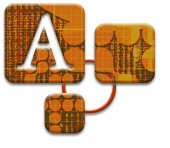|
 Topic
A2.3: Your Student Audience Topic
A2.3: Your Student Audience
Analysis of Learner Characteristics
In order to effectively analyze learner characteristics, thereby getting to
know your student audience, you need to gather the following information:
1. General Characteristics of the Target
Audience (demographics)
You’ve read about the general characteristics of online students in this
station, and now you need to collect demographic information from your students.
Here is a sample survey instrument
used to collect demographic information from online students. Use it as is
or modify it to suit your needs. Please note that this link is to a document
created in Microsoft Word.
 Are
you not sure how to download, save and return the completed survey? Are
you not sure how to download, save and return the completed survey?
2. Technological
Knowledge and Skills
One of the simplest ways to assess the technological skill level of
your student audience is through a survey, either before a course begins
or during the first week of the course. This information may be extremely
helpful in knowing whether or not time has to be spent on technology
issues, over and above course content. Download
this sample survey in Microsoft® Word®, and complete it
as a student participating in these workstations. Complete the survey,
and send it as an email attachment to fottc@pgcc.edu
with “A2 Technology Survey” in the subject line. Completing
this activity will help us with our analysis of the “student”
audience for these stations.
3. Learning Styles
Do face-to-face and on-line teaching require different approaches to addressing
different learning styles? If so, how? The three main learning styles are:
visual, auditory, and kinesthetic/tactile. Visual learners make up about
65% of the population. Auditory learners make up about 30% of the population.
Kinesthetic learners make up about 5% of the population. Despite preferences,
most people rely on a combination of learning styles (McMahon, 2000).
Follow this link to the Maryland
Faculty Fellows Training Curriculum Template. There you will find
a multitude of resources addressing learning styles. One is the Faculty
Online Technology Training Consortium (FOTTC) presentation by Joan McMahon,
Towson University that you should review. This presentation is done
in Microsoft PowerPoint®, so if you have questions regarding view
PowerPoint documents online refer to the help link above.
| Learning
Activity I |
| Here is a link to an online Learning
Styles Questionnaire you can use with your students. Follow
this link and complete the questionnaire to help you identify your
learning style. This is an online survey so you will not need to
download or e-mail the results. |
4. Academic Motivation
Finding out your students’ motivation for taking your course and what
they hope to gain from the course is part of your student analysis. One popular
way to gather this information is in the form of an entrance essay. Some questions
you might want answered in this essay are:
- Why did you take this course?
- What grade do you want to earn in this course?
- What help do you need from me (the instructor)
to complete this course?
- How do you envision using what you learn in this
course?
5. Audience’s Prior Knowledge of the
Topic
One way to find out about your students’ prior knowledge of the topic
is to simply ask. Have your students submit a writing sample that relays what
they know, or think they know, about the subject. Another method of assessing
prior knowledge is a pretest. The Sociology professors at Anne Arundel Community
College distribute a 75 item objective test on the core concepts of the Introduction
to Sociology course to all students enrolled in the course prior to the first
day of class. Analysis can determine, to some degree, students’ prior
knowledge of course concepts. As a follow-up, they distribute the same test
as a posttest. The data is analyzed to show a measurement of learning throughout
the course.
| Learning
Activity II |
| In this station, you have learned some
different methods of acquiring information that will help you with
an analysis of your student audience. Now we ask you to share an
activity you’ve used, a question you find effective, or a
web site that helps with learner assessment. Post your contribution
to the Student
Audience forum for others to review, and see what others have
posted there that might be helpful to you. |
 
TOP
|